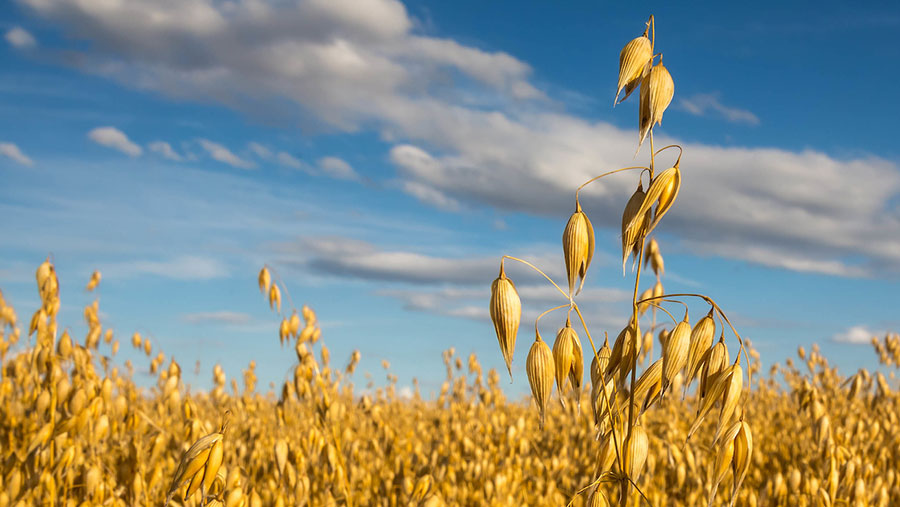English oat area soars by 17% as OSR takes a tumble in 2017
 © Tim Scrivener
© Tim Scrivener The combined total area of spring and winter oats grown in England for harvest 2017 is one of the largest for three decades, according to provisional figures.
Jumping 17% from 102,000ha in 2016 to 120,000ha this year, it marks the second largest English oat crop grown for 30 years, provisional Defra statistics show (PDF).
Driven by a steadily expanding desire for oat-based breakfast cereals and snacks, worldwide demand for oats has been on the up in recent years and hit a record high in 2015.
At a glance: 2017 English crop areas
- Wheat 1.64m hectares, down 2.5% from 2016
- Winter barley 361,000ha, down 4% from 2016
- Spring barley 478,000ha, up 15% from 2016
- Winter oilseed rape 514,000ha, down 3.8% from 2016
- Oats 120,000ha, up 17% from 2016
See also: Harvest 2017: The 5 top-yielding winter barley varieties
Meanwhile, the total area of winter oilseed rape grown in England took another hit in 2017, shrinking by an estimated 3.8% from 514,000ha.
This is perhaps unsurprising given the acutely dry autumn that saw crops across the UK fail to establish, coupled with sustained difficulties in defending seedlings from high flea beetle pressure in eastern counties.
As a result, East Anglia saw a 10.9% plummet in the area of rapeseed grown this season, equating to a 14,000ha reduction in the region.
On the flip side, the North West and Merseyside region expanded its oilseed rape area by 4.8% and the South West’s OSR acreage also went up by 1.6% compared with 2016.
Britain’s rapeseed area has fallen for the fifth season in a row and now languishes at a 13-year low.
Wheat area dips
The 2017 English wheat area is estimated to have dipped by 2.5% to 1.64m hectares compared with 2016. While all regions in England saw a fall to some extent in the total wheat area, the regional variations are significant.
The East Midlands, which accounts for a fifth of all English wheat grown, has seen a 3.7% decrease in total wheat area this year, while the area grown in the North East only fell by a negligible 0.3%.
Swing to spring barley
The spring barley area in England surged again as part of a wider trend toward growing a larger acreage of spring crops, to help growers tackle blackgrass, while also being drafted in as a backup option for lost oilseed rape crops.
This more than offset a 4% fall in the total area of English winter barley to 361,000ha, pushing the combined area of spring and winter barley up by 6% compared with 2016.
More land in production
A provisional estimate shows the area of uncropped arable land in England has fallen by 11% to 193,000ha. It means arable farmers brought about 24,000ha of previously uncropped land back into production in 2017.

